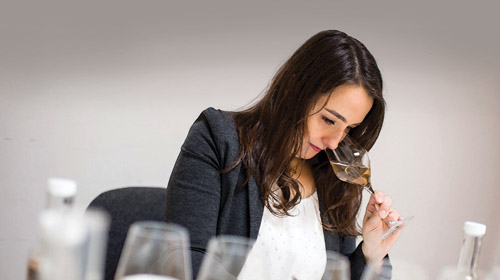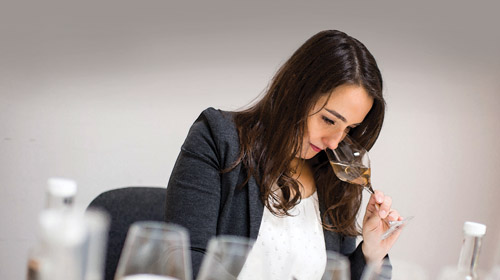
When someone pours you a highly recommended new wine do you wonder whether the winemaker who made it is male or female? Chances are, unless the label clearly announces a woman’s name, you assume it’s made by a man. But the fact is: women winemakers are (and have been) making some of the great wines in the North Bay. And while California has the most women winemakers in the U.S., only 12 percent of them are women. The pioneers and relative newcomers share what it’s like to be female, highly skilled, and driven to make great wine, in a field dominated by males. What we found was less about the issue of gender than a common passion for wine and zeal for the work and knowledge it takes to make and share it. Here are some women who, if you love wine, you will want to meet.
Cathy Corison
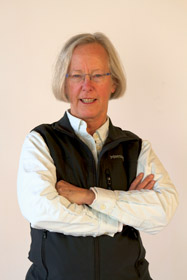 In 1987, Cathy Corison founded Corison Winery and became the first woman-winemaker-proprietor in the Napa Valley. Though the distinction is impressive, the importance of the gender issue seems to have faded with time.
In 1987, Cathy Corison founded Corison Winery and became the first woman-winemaker-proprietor in the Napa Valley. Though the distinction is impressive, the importance of the gender issue seems to have faded with time.
“I spent the first half of my adult life fighting the notion that there were gender differences, because they were always used against us,” she says. While research suggests that women may have different sensory abilities than men, these qualities, she observes, vary with individuals. Corison met her husband, William Martin, in 1990. The two have run the business together for 25 years. “I couldn’t have done all of this alone,” she says. “Some of the very best tasters I’ve ever known have been men,” she says, “but it could be that there’s a difference.” What interests her more is how her own intuition works and the magic that can happen when intuition is supported by a firm foundation in science, as she had at University of California, Davis. Then, with discipline and science ingrained, intuition can take over. “And then, at some level, it becomes art,” she says.
Corison has been making wine in the Napa Valley for 40 years, and has seen the valley come to life. “Forty years ago, the valley was rural and depressed and scratching its way out of Prohibition. Now, it’s the opposite of that.” Today’s picture includes women working at all levels of winemaking. “Even in the vineyards, though that took longer,” she says. “Now, there are a lot more women making wine, and a lot of them making great wines.” The qualities necessary for a woman to become a great winemaker span 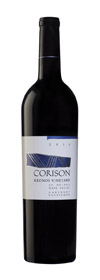 both genders, she says. First, you have to have the passion for wine, and that has nothing to do with gender. After that, there is a deeper quality. “We all have something we’re called to do, something we can be good at,” she says. “The trick is to figure out what that is.”
both genders, she says. First, you have to have the passion for wine, and that has nothing to do with gender. After that, there is a deeper quality. “We all have something we’re called to do, something we can be good at,” she says. “The trick is to figure out what that is.”
While her world of taste is wide, the world in which she makes her wines is small. “I’ve spent my entire adult life making wine in a little tiny corner of the Napa Valley, between Rutherford and St. Helena,” she says, “on the benchland up against the western hills where the alluvial soils are ideally suited to growing grape vines and Cabernet specifically.”
She deliberately chose this little corner of the world to make wine which she could already see, “fully formed in her head”—a Cabernet Sauvignon which is both powerful and elegant. “No matter what you do, Cabernet is always going to be powerful, but it’s more interesting to me to be at the intersection of elegance,” she says. “It’s just balanced more for aging and gracing the table. The alcohol’s lower and there is a good viscosity and incredible complexity of flavors.” She just did her 31st vintage of the Corison Napa Cabernet. “I’m still trying to do the same thing, but I hope I’m better at it, after all these years.”
Carol Shelton
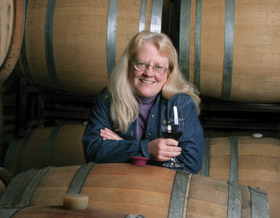 As a young child, Shelton, who loved to help her mother cook, learned that she had a talent in her nose. When her mother asked her to bring her the oregano for the spaghetti sauce, the little girl, looking at the rows of spice jars, couldn’t distinguish one spice from the others. “But Mom,” she recalled saying, “I can’t spell!” And her mother would reply, “Well, you don’t have to spell, you can smell!” Little did they know, young Shelton had just stepped foot on her path to becoming a winemaker. “You tend to gravitate towards something you’re praised for,” she says, and while she was praised early on for her poetry, when it came to choosing a career, her practical mother, knowing she was also good in science and loved cooking, steered her toward the food sciences, so off she went to UC Davis. She took science courses, but it wasn’t until she enrolled in an introduction to wine class that her career path clicked into place.
As a young child, Shelton, who loved to help her mother cook, learned that she had a talent in her nose. When her mother asked her to bring her the oregano for the spaghetti sauce, the little girl, looking at the rows of spice jars, couldn’t distinguish one spice from the others. “But Mom,” she recalled saying, “I can’t spell!” And her mother would reply, “Well, you don’t have to spell, you can smell!” Little did they know, young Shelton had just stepped foot on her path to becoming a winemaker. “You tend to gravitate towards something you’re praised for,” she says, and while she was praised early on for her poetry, when it came to choosing a career, her practical mother, knowing she was also good in science and loved cooking, steered her toward the food sciences, so off she went to UC Davis. She took science courses, but it wasn’t until she enrolled in an introduction to wine class that her career path clicked into place.
“It’s the most creative science, and the most scientific art,” she says. She never forgot what she learned from Dr. Ann Noble, her advisor: “The sign of a true professional is that they don’t go home at five o’clock.” That fit her creative temperament. “You keep working, and your brain is always chewing away, you’re always wanting to learn new things, no matter where you are or how late in your life you are. You’re always working, working, working.”
What drives her is her combined passion for wine and food and the harmony each brings to the other. “I love to eat,” she says. “I don’t want the wine to clobber my food, and I don’t want the food to clobber my wine. So I put a lot of work into it.” Wine and food should enhance each other, if they’re in balance and the flavors are integrated. No one component should overpower over the others. “So, it’s about restraint.”
 “That’s one thing I think differentiates women winemakers,” she says. “This is a brash generalization––but I see a lot of wines made by men and they’re all out to show everything they’ve got. Show them all the oak! Over the top alcohol, and sure, Robert Parker loves it, but can you drink that? Can you drink a lot of it? Can you age it? Can you drink it with food? That’s where women come in,” she says. “We’re the ones cooking the meals, mostly, and we’re used to making our homes harmonious.”
“That’s one thing I think differentiates women winemakers,” she says. “This is a brash generalization––but I see a lot of wines made by men and they’re all out to show everything they’ve got. Show them all the oak! Over the top alcohol, and sure, Robert Parker loves it, but can you drink that? Can you drink a lot of it? Can you age it? Can you drink it with food? That’s where women come in,” she says. “We’re the ones cooking the meals, mostly, and we’re used to making our homes harmonious.”
For the first 20 years or so into her career, while she knew she could make great wine, she chafed in the male environment and realized she would rather make great wine on her own, in her own winery. In 2000, with the support of her husband as her business partner, Mitch Mackenzie, she launched Carol Shelton Wines and became known as one of a few “pioneering winemakers.”
She likes to mentor women in the industry, and her advice is as practical as her mother’s was to her: “There are a lot of different skillsets,” she says. “If you want to get into the business, you have to understand business. You have to take accounting classes. You can’t be a prima donna artist and expect to succeed. You must go out on the road and sell. You’ve got to wear a lot of hats, and it takes a lot of hours.”
Margo Van Staaveren
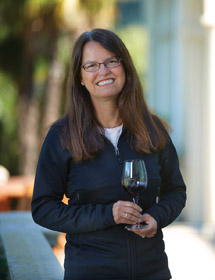 “I don’t think of myself as a ‘woman winemaker,’” says Margo Van Staaveren, winemaker and general manager of Chateau St. Jean since 2003. And as of 2017, she is also director of luxury winemaking at Treasury Wine Estates. “When it comes to operations meetings, I may be the only woman in the room, but my company is supportive and has never made me feel that I’m a ‘woman winemaker’ and that my peers are different.”
“I don’t think of myself as a ‘woman winemaker,’” says Margo Van Staaveren, winemaker and general manager of Chateau St. Jean since 2003. And as of 2017, she is also director of luxury winemaking at Treasury Wine Estates. “When it comes to operations meetings, I may be the only woman in the room, but my company is supportive and has never made me feel that I’m a ‘woman winemaker’ and that my peers are different.”
Van Staaveren began her career at Chateau St. Jean in 1980 as a lab technician, worked up to winemaker and has been winemaker and general manager to this day. Given her experience, do women have an edge on tasting? Are their palates somehow more sensitive? “I don’t know how you would judge that,” she says. “Tasting is so subjective, even if you were to perceive a wider range of tastes than men, how you verbalize that is critical as well. So, there are two things going on. One, what you actually taste; and two, how you  share that information.” She says she has never known women to be more “super-tasters” than men. “But I certainly work with more men than I do women.”
share that information.” She says she has never known women to be more “super-tasters” than men. “But I certainly work with more men than I do women.”
Taste is important, but a winemaker must practice scientific exactitude and diligence to support the making of large quantities of fine wine over numbers of years. “I can have 25 different lots of Cabernet,” she says. “Some can be four barrels, some can be 20 barrels. They may just go into 500 cases, but I still have to distinguish those lots from each other and also to have some sort of a feel of what I got from what vineyard.” She takes copious and detailed notes. “It’s important to know, when the finished wine comes out from the vineyard, when you tasted the grapes, and how that fits with the different wines you’re making,” she says. “When harvest rolls around, you can’t wing it.”
With all the planning, preparation and detail, winemaking is a lifestyle and as she practices it, is fun. “I like the way it rolls through the seasons and has formed my life,” she says. “I met my husband at the winery, we had our children who came to the winery, and it’s been a rich and exciting career.” After all these years, what’s her favorite wine? “The one I’m in the mood for that night,” she says.
Kimberlee Nicholls
 “People enjoy seeing a woman winemaker because they enjoy seeing women in unusual roles,” says Kimberlee Nicholls, winemaker at Markham Vineyards in St. Helena since 2001. “I guess it still strikes people as unusual. Though in Napa and Sonoma, when it comes to women winemakers, it feels like we’re way above the international average.”
“People enjoy seeing a woman winemaker because they enjoy seeing women in unusual roles,” says Kimberlee Nicholls, winemaker at Markham Vineyards in St. Helena since 2001. “I guess it still strikes people as unusual. Though in Napa and Sonoma, when it comes to women winemakers, it feels like we’re way above the international average.”
Nicholls came to the Napa Valley from a small town in Washington State, with a degree in biology from Willamette University and an eagerness to learn. She started out in the lab at Stags Leap, where she was mentored by Francoise Peschon, one of Napa’s pioneer winemakers. “She was inspiring,” says Nicholls. In 1993, she joined Markham Vineyards as an enologist, and was promoted to associate winemaker four years later. When her position of winemaker opened up four years after that, she was at a crossroads. She hadn’t come up through Davis or worked in vineyards across the world. She hadn’t ever wanted to be the front person. But, she knew, if she didn’t ask for the job, everyone would wonder why she didn’t get it. So she asked, got it, and has been Markham’s winemaker ever since. “It’s my path,” she says. No doubt, because Kimberlee is rockin’ it.
 Being a woman winemaker in a male-dominated field hasn’t been an issue. “I’ve always worked in male-dominated jobs,” she says. But, she acknowledges that women bring some qualities that can be especially helpful. Sensitivity of taste, of course, is a plus, but so is a spirit of collaboration for which women are naturally inclined. As some winemakers bring in consultants, she leans on her team. “I look for their thoughts on the blends I put together, and I listen to them, especially if I have a cold one day or dealing with an allergies, and am not that effective a taster. That’s a more feminine trait, that you’re listening to the people around you,” she says. “That does make me a better winemaker and just by enjoying the experience of new wines or new foods, being open to that allows your palate to change.”
Being a woman winemaker in a male-dominated field hasn’t been an issue. “I’ve always worked in male-dominated jobs,” she says. But, she acknowledges that women bring some qualities that can be especially helpful. Sensitivity of taste, of course, is a plus, but so is a spirit of collaboration for which women are naturally inclined. As some winemakers bring in consultants, she leans on her team. “I look for their thoughts on the blends I put together, and I listen to them, especially if I have a cold one day or dealing with an allergies, and am not that effective a taster. That’s a more feminine trait, that you’re listening to the people around you,” she says. “That does make me a better winemaker and just by enjoying the experience of new wines or new foods, being open to that allows your palate to change.”
Most of the grapes she uses come from Markham’s 350 acres of estate vineyards. She also buys some fruit from other growers. “It’s fun to have different growers,” she says. “You get to meet some amazing people who have long time histories in the Napa Valley and those stories and their knowledge feed your education.”
After 25 years in the business, working from the bottom up, she seems to have learned from experience and the best people in the field. Is there any secret lack of skill she wanted to confess? “I don’t know how to drive a forklift,” she admits with a laugh.
Pauline Lhote
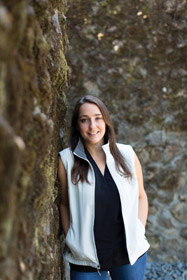 Lhote doesn’t want to make Champagne in California. She grew up on a farm in Champagne, France, and now that she is in the Napa Valley, she wants to make sparkling wines that are unique to this place. “California is all about the way of living—it’s more casual here, and there’s a lot more room for innovation. I don’t have to follow strict rules, like Champagne, which means I have more freedom and more creativity in making those wines. So I don’t want to make wines that are Champagne-like, I want to make high-quality sparkling wine, using traditional methods, which are truly representative of the Napa Valley.” And that is what she has been doing for the last two years as head winemaker at Chandon.
Lhote doesn’t want to make Champagne in California. She grew up on a farm in Champagne, France, and now that she is in the Napa Valley, she wants to make sparkling wines that are unique to this place. “California is all about the way of living—it’s more casual here, and there’s a lot more room for innovation. I don’t have to follow strict rules, like Champagne, which means I have more freedom and more creativity in making those wines. So I don’t want to make wines that are Champagne-like, I want to make high-quality sparkling wine, using traditional methods, which are truly representative of the Napa Valley.” And that is what she has been doing for the last two years as head winemaker at Chandon.
Working in a male-dominated environment was not an issue for her. “I grew up on a farm, and I have two big brothers,” she says. “Being around men is the story of my life. It’s something that I was always comfortable with, and has truly helped me in this environment.” In addition, by the time she got here, she already had a strong background in all aspects of winemaking. “I knew I wanted to be a winemaker since I was 14 years old,” she says. As a result, she planned her education around her passion. “Because I was so interested in getting into what I truly wanted to do, I interned early on. Every opportunity I had over breaks or holidays, I was working at a  winery, getting my hands dirty, going in the vineyards and working in the cellar.” By the time she came to Chandon for an internship in 2006 she was able to gain respect from co-workers quickly because they could see she knew what she was doing. She had already learned everything from the bottom up. “I arrived when I was 23 years old and I was given some pretty big responsibilities. That was exciting for me.”
winery, getting my hands dirty, going in the vineyards and working in the cellar.” By the time she came to Chandon for an internship in 2006 she was able to gain respect from co-workers quickly because they could see she knew what she was doing. She had already learned everything from the bottom up. “I arrived when I was 23 years old and I was given some pretty big responsibilities. That was exciting for me.”
“Now, when I see young women or young interns coming in for the first time, I see that they have obstacles and I want to help them and guide them in that special environment.” She doesn’t see a huge difference between the U.S. and France in terms of gender acceptance. “Maybe women are getting more acceptance here in the U.S. Once you show you can do the work, there’s no problem with gender or age as long as you’re able to show that you’re the right person for the job.”
Recently, 20 members of her family visited from Champagne, France. They wondered why she wanted to work in California, rather than return home and make Champagne. But after their visit they changed their minds. “They said, ‘Now we get it!’ When we started to taste the wines, they were surprised, and all of them said, ‘It’s pretty good!’ They were impressed at what we produce here.”
Heidi Bridenhagen
 Heidi Bridenhagen, winemaker at MacRostie Winery and Vineyards since 2013, is one of the young and rising winemakers in the area. With her background in biochemistry from University of Colorado at Boulder, she considers herself a biochemist first and foremost, even before she thought of becoming a winemaker. “That influences who I am as a winemaker. I love the artistry, the culture and the outdoors aspect of it. But I definitely would say my formal training has heavily influenced how I approach winemaking.” Also influencing her is the extensive travel she did in Europe and her cellar work in New Zealand.
Heidi Bridenhagen, winemaker at MacRostie Winery and Vineyards since 2013, is one of the young and rising winemakers in the area. With her background in biochemistry from University of Colorado at Boulder, she considers herself a biochemist first and foremost, even before she thought of becoming a winemaker. “That influences who I am as a winemaker. I love the artistry, the culture and the outdoors aspect of it. But I definitely would say my formal training has heavily influenced how I approach winemaking.” Also influencing her is the extensive travel she did in Europe and her cellar work in New Zealand.
“In New Zealand, the environment was more masculine,” she says. “I do believe it’s important to find female mentors.” These can be successful winemakers, or a press operator. Learning from females who are strong and found a role in the wine industry has helped carve out her career path.
“I had a female lab manager at my first internship, and she was strong and smart and someone to look up to. You have to be strong and assertive, and if you’re skilled you do a good job and make it be known. I worked under Cara Morrison who is the Chardonnay winemaker at Sonoma-Cutrer, and I’ve worked  with different female viticulturists. It’s important to find those people.” She advises young women who come looking to be in the business to be strong and confident.
with different female viticulturists. It’s important to find those people.” She advises young women who come looking to be in the business to be strong and confident.
It’s not easy for anyone—male or female—to become a top winemaker. “It takes a lot of confidence and tenacity and skill,” she says. “Also, not every job I’ve ever had has been awesome. But I found a great person in Steve MacRrostie and the company that now owns MacRrostie. I was accepted and encouraged.” At MacRrostie, her creativity has flourished.
“I’m very much a vineyard-driven winemaker,” she says. “I’m always exploring with vineyard techniques, winemaking techniques. I don’t fall into a rut or routine. Every year is new and exciting.” She credits her background in science as an important part of her identity and background. “I am a biochemistry major and honestly, I am a biochemist first and foremost. Before I never even thought I would be a winemaker,” she says. “That influences who I am as a winemaker. The reason I am a winemaker is because of the artistry, the culture and the outdoors aspect of it. But I definitely would say my formal training has heavily influenced how I approach my work.”
The female factor
Do women have an edge when it comes to the business of winemaking? First and foremost, women winemakers see themselves as people with a passion for the culture, practice and lifestyle of the making of wine. To succeed as a winemaker involves the same qualities for women as it does for men: love of the land, knowledge of soils and vines, zest for working in the vineyards through the seasons. It also involves mastery of the chemistry that makes the magic in the glass, to bring their years of education and experience together with their own unique intuition to blend flavors and smells and tastes and textures that make their signature wine. A woman winemaker will tell you, it takes the same qualities to succeed in the business: hard work, love of the process, unique vision and dedication to keep on striving for excellence. In the end, success comes down to the qualities of hard work, dedication, love and integrity of the product. As Cathy Corison says, “All we have to sell is integrity.”
Note: If you want to keep track of the statistics about women winemakers, check out Women Winemakers of California’s website: webpages.scu.edu/womenwinemakers/facts.php


